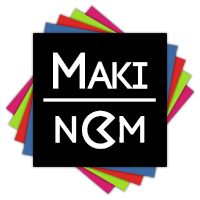Learn more about tick machines and what you can use them for.
Tick machines are Unity components that are added to game objects. They’re mostly used for game mechanics that happen every frame or fixed framerate frame (physics), like player/camera controls.
A tick machine component can be added through the components menu (Makinom > Machines > Tick Machine) or the scene wizard (Add Machine > Tick Machine). A game object with a tick machine is represented in the Unity scene view by this gizmo icon:
![]()
You can learn more about machine components in general and their basic settings in this how-to.
Start Types
A tick machine is started by update functions.
Update
Started each frame. It’s implemented in the component’s Update function.
Example
This start type can be used to move the player’s game object. Use a Move node to change the position of the game object each frame – this also allows using input keys to control the position with the player’s input.
Late Update
Started each frame after all Update functions have been called. It’s implemented in the component’s LateUpdate function.
This start type is best used for camera controls, since the player’s position will be updated at this time.
Example
This start type can be used to move the camera. Use a Smooth Follow node to let the camera follow the player’s game object.
Fixed Update
Started each fixed framerate frame. It’s implemented in the component’s FixedUpdate function.
This start type is best used for physics related mechanics, e.g. moving rigidbodies.
Example
This start type can be used to move a game object using their rigidbody component. Use a Move node (using a Rigidbody move component) or a Rigidbody Move Position node to change the game object’s position using it’s rigidbody.

